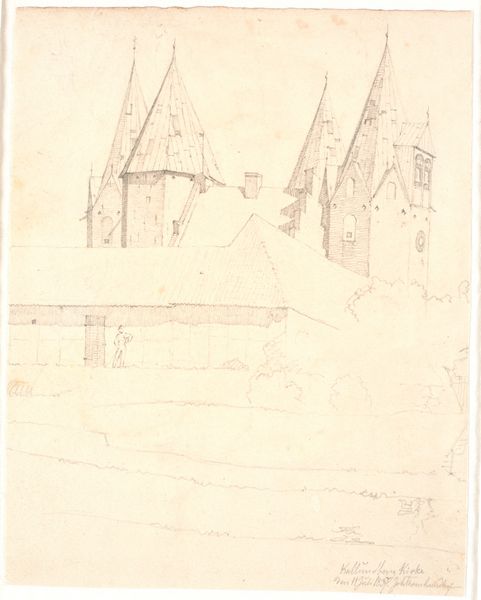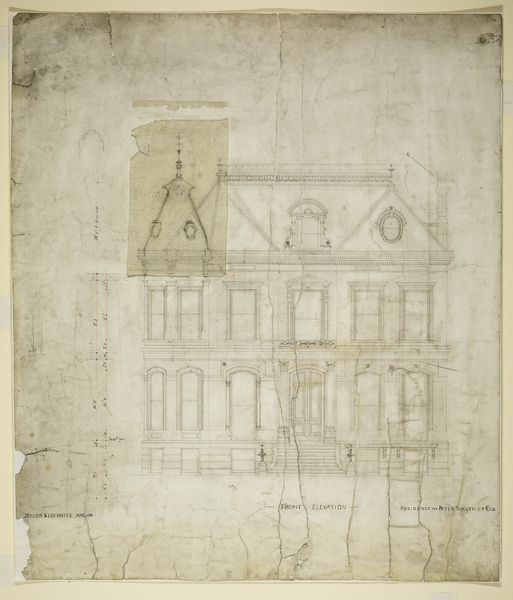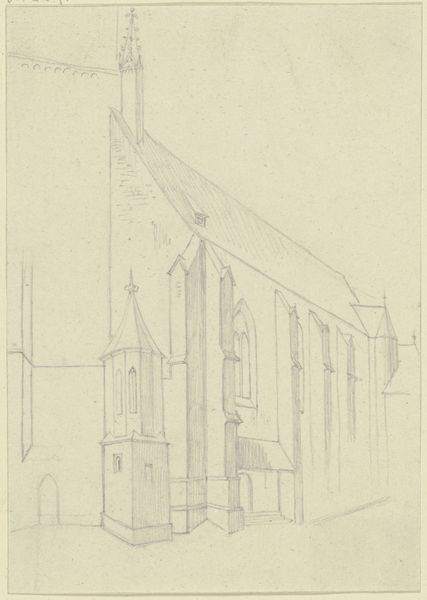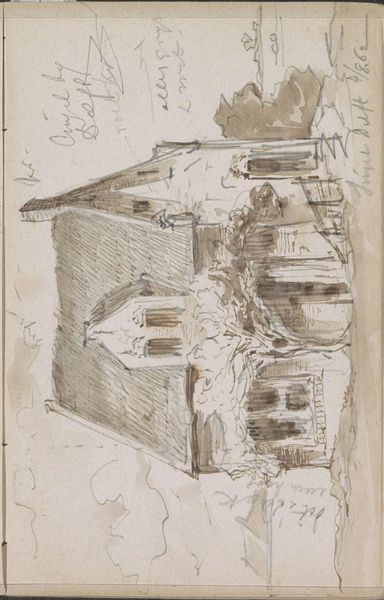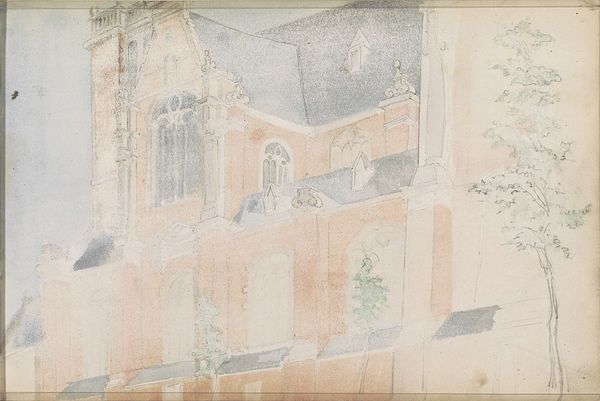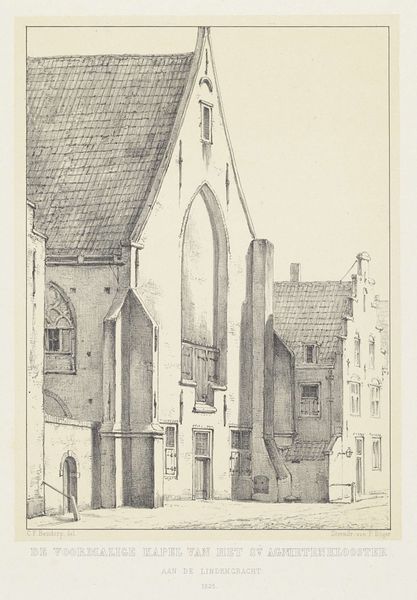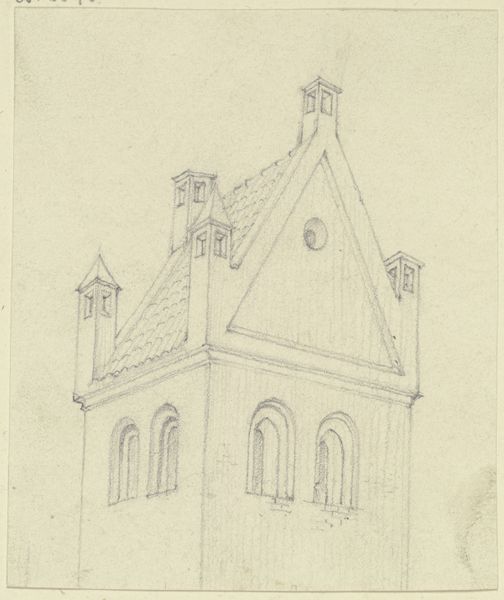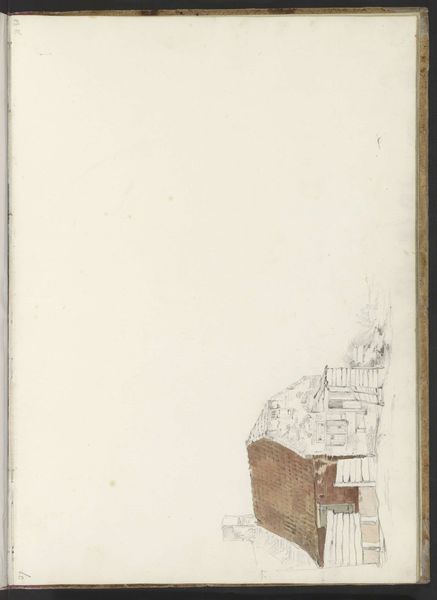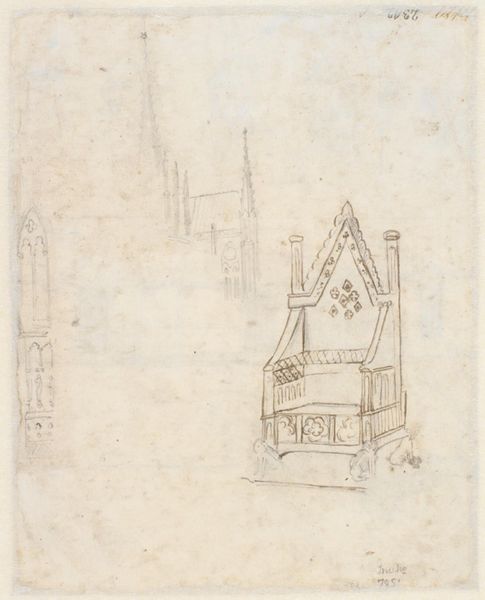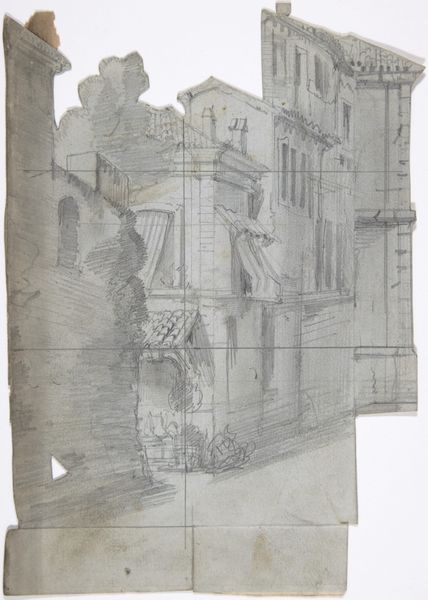
drawing, plein-air, watercolor, architecture
#
architectural sketch
#
drawing
#
aged paper
#
toned paper
#
quirky sketch
#
plein-air
#
sketch book
#
landscape
#
personal sketchbook
#
watercolor
#
sketchwork
#
romanticism
#
sketchbook drawing
#
cityscape
#
storyboard and sketchbook work
#
academic-art
#
sketchbook art
#
architecture
Dimensions: height 272 mm, width 209 mm
Copyright: Rijks Museum: Open Domain
Editor: So, this is Johan Adolph Rust's "De Oude Kerk te Amsterdam," a watercolor drawing from 1843. It's kind of a moody sketch, all muted colors. What do you see in this piece? Curator: I see a document of a specific time and place, but more importantly, I see a record of the social and political landscape viewed through the lens of architectural space. Consider, what did a church represent in 1843? Whose voices were amplified within its walls, and whose were silenced? Editor: So, you’re saying it’s more than just a pretty picture of a building? Curator: Precisely! It’s crucial to unpack how these spaces contribute to larger narratives of power and identity. How does the composition—the partial view, the angle—hint at the artist’s position relative to the church, and potentially to the institution it represents? Editor: I see what you mean. The way it’s cropped makes it feel…almost imposing, but also incomplete, like there’s more to the story. Curator: Exactly. And who gets to tell that story? Was Rust merely capturing the church, or was he implicitly commenting on its role within Amsterdam's social fabric? How do the materials -- watercolor, paper -- factor into our understanding of the piece as a kind of document? Editor: It's like the sketch itself becomes evidence. I hadn't really thought about it that way before. Thanks! Curator: Indeed. Examining art this way opens up important conversations about who gets represented, and how historical spaces can be interrogated through a contemporary lens. Editor: That's a really powerful way of thinking about art. It makes me see these older pieces as active participants in current discussions, not just relics.
Comments
No comments
Be the first to comment and join the conversation on the ultimate creative platform.
